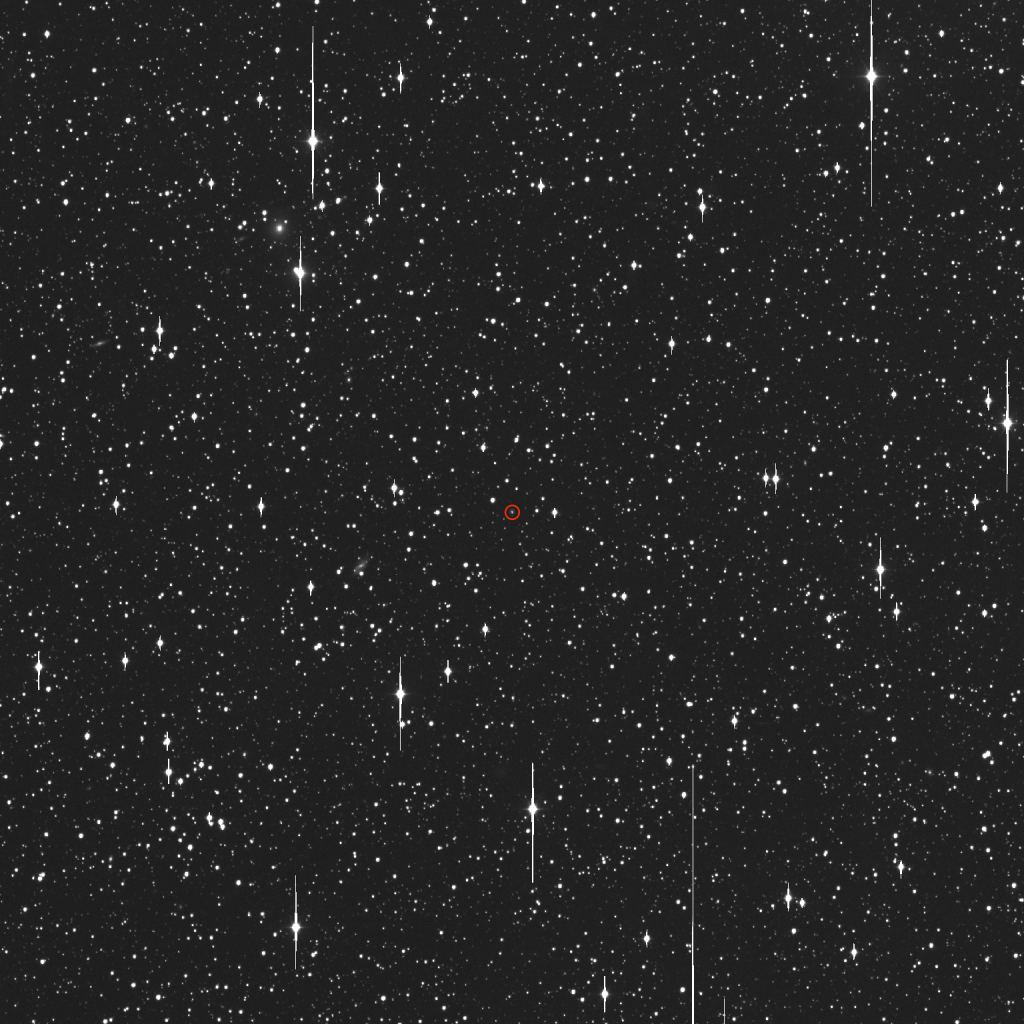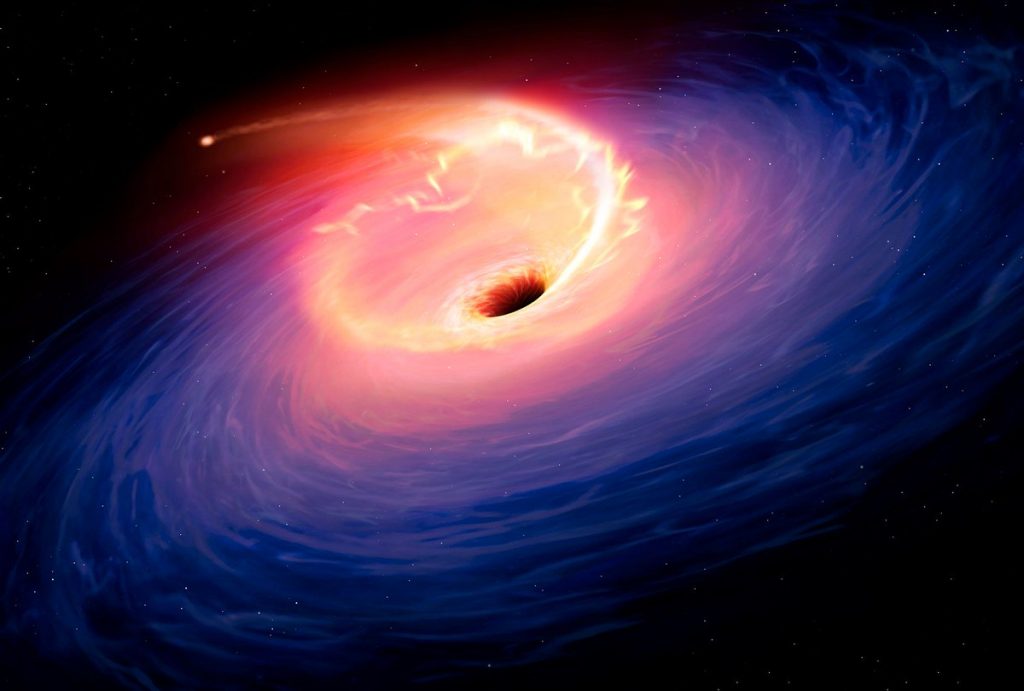Neutrinos are notoriously finicky particles. Hundreds of trillions pass through a person’s body every second, yet they hardly seem to interact with anything (though they actually do a lot). Even more hard to find are the “high energy” neutrinos that are believed to be formed as the outcome of some of the most violent events in the universe. Now, researchers using NASA’s Swift telescope have found a high energy neutrino for the first time from one type of those ultra-violent events – a tidal disruption. But something was a little bit off about it.
Tidal disruptions happen when a black hole begins to rip apart a star. As part of the gravitational dance of these two massive objects, particle jets can sometimes erupt from the black hole as it swallows a stream of particles from the star. Astrophysicists have theorized that high-energy neutrinos could be created in these jets, but so far one has not been observed.

Credit: ZTF / Caltech Optical Observatories
One of these tidal disruptions is known, rather practically, as AT2019dsg, which was found in April of 2019 by the Zwicky Transient Facility (ZTF), part of the Palomar Observatory. It is located in the constellation Delphinus in a galaxy approximately 690 million light years away know (again practically) as 2MASX J20570298+1412165. Sometimes astronomers are great at coming up with whimsical names or acronyms, but it seems the sheer scale of number of galaxies taxes even their copious amount of naming creativity.
When AT2019dsg was first observed, astronomers followed a protocol they had established for observing tidal disruptions – they trained more observatories on it. In this case, visible, ultraviolet, and X-rays were provided by Swift, ESA’s XMM-Newton telescope also took X-ray data, and the NRAO’s Very Large Array and the MeerKAT telescope, run by the South African Radio Astronomy Observatory, took data in radio.
Credit: NASA’s Goddard Space Flight Center
With that much observational power focused on one specific event, it was one of the most scrutinized places in all the universe. The brightness of the event peaked, with no neutrinos associated with it. That was, until the NSF’s IceCube Neutrino Observatory said they captured a high-energy neutrino, and with help from a team at the ZTF, they tracked the patch of sky the neutrino originated from to the same patch AT2019dsg was located.
The only problem was the neutrino appeared 5 months after peak brightness of the tidal disruption, long after any current theory would have suggested it would have been created. And there were no observed jets, thereby leading astronomers to believe that it was highly unlikely a high energy neutrino would have formed as part of the event.
Yet there it was, and the scientists calculated it was a 1 in 500 chance to come from anything in that segment of the sky other than AT2019dsg. So new theories to explain the discrepancy must be thought up.
One of the most clear-cut theories, put forward by Walter Winter and Cecilia Lunardini, at the German Electron-Synchrotron (DESY) and Arizona State University respectively, suggest that the presence of any jets might have been masked by a cloud of debris. In that case, the neutrino-forming jets could have been present at the event, we just wouldn’t have seen them. Their theory would also nicely explain why 98% of the brightness of X-rays from the event has dissipated in a mere 160 days. Another team, led by doctoral student Robert Stein at DESY, has a different idea – they think rapid cooling could explain the rapid drop in observed X-rays.

Credit and copyright: Mark Garlick.
Either way, finding such a high energy neutrino from a tidal disruption event is a new step forward for science, and a tribute to the multispectral observing power brought to bear on the small patch of sky it was contained in. As always, more data is needed to confirm either theory for the existence (or lack thereof) of the jets theorized to cause these neutrino outbursts. If, in fact, there was no jet formed as part of AT2019dsg, then that makes the finding all the more interesting as it begs the question – what caused the neutrino’s creation in the first place then?
Learn more:
NASA – NASA’s Swift Helps Tie Neutrino to Star-shredding Black Hole
Nature Astronomy – A tidal disruption event coincident with a high-energy neutrino
Sci-news – Astrophysicists Detect High-Energy Neutrino from Tidal Disruption Event
UT – Astronomers Watch a Star Get Spaghettified by a Black Hole
Lead Image Credit:
Depiction of a tidal disruption event, from the NASA video linked below.
Credit: NASA Goddard Space Flight Center

